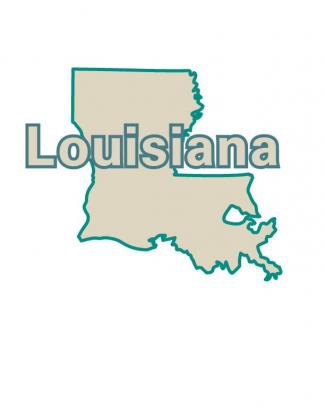
Jim Bradshaw
When the surveyor William Darby first explored south Louisiana in the early 1800s, he said seven “grand” prairies were “the most remarkable feature” of the region.
He listed them as Grand Chevreuil, which ran roughly west of Bayou Teche; the Attacapas [sic] Prairie between the Teche and Vermilion; the “large prairie of Opelousas” between the Vermilion and Mermentau; the Grand prairie, “which commences about eight miles north of Opelousas church, winds between the waters of the Teche and Courtableau … then gradually turns south between Bayou Cane and Bayou Mallet; the Prairie Mamou between Bayou Nezpique and Bayou Cane; Prairie Calcasiu [sic], east of Bayou Nezpique; and the Sabine prairie between the Calcasieu and the Sabine. (William Darby, A Geographical Description of the State of Louisiana.” New York: James Olmstead, 1817)
He described each of the prairies in detail and marveled at their extent and fertility, but, although “remarkable,” they were not the only thing that caught his eye. The features that puzzled him most about south Louisiana were the hills that began to rise on the northern edge of the flat prairie land.
“It will no doubt excite the astonishment of many, why so much importance should be attached to elevations so very small above the general level as the hills in question,” he wrote.
The reason for their importance, in his view, was that he thought they might be as old as the earth itself.
“Mountains, rivers, hills, and other permanent features remain nearly the same … throughout the lapse of ages,” he said. “The assumption may be risked … that the [hills were] at some remote period of time much more elevated than at the present.”
How much taller? He couldn’t say.
“It is above human power to point out the changes that have taken place, since this the time when this globe came fashioned from the hand of an Almighty Maker, who elevated the mountains, formed basins for the seas, and sunk channels for rivers, and who, by his omnipotence, gave the earth its then form,” he thought. “But I may, however, be indulged in the reasonable supposition, that the elevated parts of the glove are primitive. … Extravagant as the assertion may appear, it is a safe conclusion that those hills are an extension of the mountains … [that] pervade the continent in its whole length.”
Darby admitted that the hills were likely formed “in periods of time beyond human skill” to understand, and that his conclusions were largely a matter of conjecture. But, he said, the hills and their origin were “a subject unnoticed by any previous writer as far as I am informed.” He hoped that some later investigator would make an “inquiry [that] must lead to more rational ideas on the geological history” of south Louisiana
That wish was eventually fulfilled and today’s “more rational” geological theory is that in the long distant past the hills of south Louisiana were under a sea, not part of a mountain chain. They and all of south Louisiana are among the youngest features on the globe, not the oldest.
But we can give Darby some small credit for his curiosity and for starting the conversation. And, we can also say that even if he was far wrong about the past of the hills, he was absolutely right about the future of the prairies when he wrote that one day they would be populated by people who would be “numerous, happy, and wealthy.”
A collection of Jim Bradshaw’s columns, Cajuns and Other Characters, is now available from Pelican Publishing. You can contact him at jimbradshaw4321@gmail.com or P.O. Box 1121, Washington LA 70589.
